Of Old Radios And Related Items--Published Monthly
Yard Sales -- Radio's Best Friend!
Mignon and DeForest FindsBY DICK DESJARLAIS
Web Edition
The search is a part of everyday life for a collector. Dick Desjarlais' success story reminds us never to resist the antique shop or yard sale where we can ask the key question, "any radios?" (Editor)
I want to share with you a yard sale experience that truly reflects the often used phrase, "yah nevah know" (Bostonese for "you never know"). Those three little words motivate many antique radio addicts, including myself, to haunt yard sales on summery weekends. (Same as garage sales, tag sales, whatever, depending on where you live.)
If you haven't tried yard "saling" for that radio on your wish list, or for radios you would fix up and resell, then my experience might just tempt you to give the yard sale circuit a whirl. Granted, yard sale searches for a highly specialized commodity like antique radios take time, persistence and patience. It takes a willingness to expect and accept disappointment nine times out of ten. But it is the tenth, or even the hundredth time that the "big hit" happens, sometimes in a most unexpected way. It is the big hit that makes the tedious effort most worthwhile.
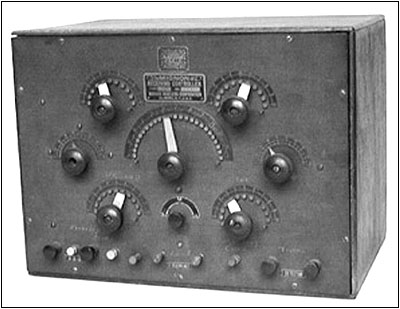
Figure 1. The Mignon Type RLC-6, No. 11, ca.1917, a glorified crystal set, that proved to be a yard sale treasure.
The Big Hit
For me, the big hit of my fourteen years of yard saling happened this summer, and in my own home town! On this particular Sunday I had had nothing but "no" answers to the question I always ask "Do you have any old radios?" By the way, I always ask, even though there might not be a radio in sight.
At the last stop for that morning, I again inquired, "Any old radios?" and again, the answer was "no." However, as I was walking away, a young fellow pulled up in his pickup truck with more fodder for the yard sale. His answer was also in the negative, but then he said, "I have a friend who lives just down the street who has lots of radios. Come on, I'll introduce you."
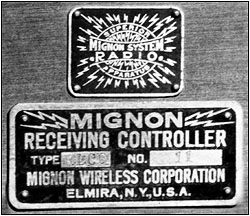
Figure 2. A closeup of the label identifying the Mignon Receiving Controller, Type RLC-6, No.11.
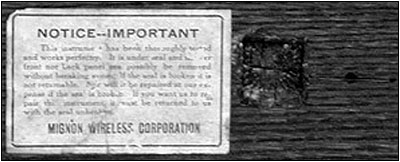
Figure 3. The notice and wax seal on the back of the Mignon cabinet.
Figuring I had nothing to lose, I walked with him to a modest home, with a tired looking shed in the back yard. When the owner ushered me into the shed, an old cinder block structure, my first impression was of mildew, dampness, dirt and dust. Not a good beginning, I thought.
But in one corner, on the wet cement floor, and on musty shelves were several radios and various test instruments. In addition, there were miscellaneous radio parts in moldy cardboard cartons. I had to exercise care in lifting these, as they were so damp and mildewed that the bottoms just fell out. All in all, a sorry sight!
I did notice a Westinghouse RC (RA-DA) in reasonable condition, and so expressed interest in that one item. However, the owner wished to move the entire lot so he could restore the shed for his own purposes. Considering that at least the Westinghouse RC was worth something, I paid him a very nominal amount for the whole lot. Not focusing much attention on the rest of the stuff I had just bought, a friend and I loaded up his pickup truck and left. I figured I would tackle the job of sorting out and cleaning up everything when I got home.
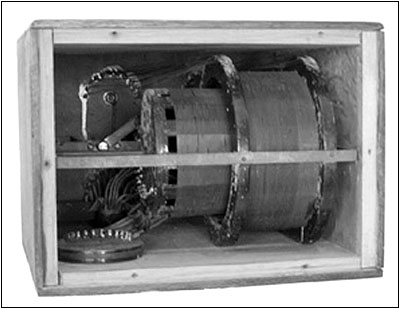
Figure 4. The interior of a Model RLC-5. The RLC-6 contains the same loose coupler.
At this juncture, I had no idea of the surprises that awaited me. Back in the shop, one item that attracted my particular attention was a wooden cabinet, approximately 15 inches square, shown in Figure 1. The front panel was festooned with eight control knobs, six of which were multiposition tap switches. The remaining two controls were continuously variable and calibrated from 0 to 180 in steps of 20. The array of controls and their early design caused me to consider that this unit, whatever it was, could be of pre-1920s origin.
The Mignon Type RLC-6, No. 11
At the top of this panel a nameplate, shown in Figure 2, identifies the set as "MIGNON RECEIVING CONTROLLER -- Type RLC-6, No. 11." My curiosity was further heightened by the wax seal and notice on the back of the cabinet, shown in Figure 3. The notice reads:
Notice -- Important.
This instrument has been thoroughly tested and works perfectly. It is under seal and neither front nor back panel can possibly be removed without breaking same. If the seal is broken, it is not returnable. Nor will it be repaired at our expense, if the seal is broken. If you want us to repair the instrument, it must be returned to us with the seal unbroken.
Now I was completely mystified. What was so important about the innards of this Mignon Type RLC-6 that it required a seal that would break if either the back panel or the chassis were removed?

Figure 5. The De Forest Audion nameplate.
I decided to call John Terrey of A.R.C. fame, with whom I have conducted business for many years. He would know what this Mignon thing is. He obviously did, for over the phone I heard him gasp, "Dick! you've got a Mignon? They are worth thousands!" It was my turn to gasp, and all I could say was, "What!"
I described the Type RLC-6 a little more and indicated that it was the 11th in its series and made in 1917. John explained that the Mignon was essentially a glorified crystal set. It turned out that he already had a couple of Mignons, but had been searching for more for a long while. It was no surprise then, that he offered to buy it on the spot to add to his Mignon collection.
Since I had opted not to break the seal on this rare, near mint set, I had no clue as to what the chassis looked like. But John came through with a photo of a similar chassis from another set in the Mignon series shown in Figure 4.
Ernest C. Mignon began his activity in the wireless business around 1910. By 1913 his building in Elmira, New York, was turning out receivers for radio Amateurs. Chartered in 1915, the Mignon Wireless Corp. then published a 16-page catalog featuring six tuners.
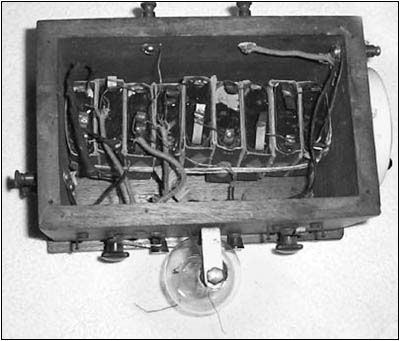
Figure 6. The 9 small batteries of the De Forest JR-4 are exposed because the bottom of the JR-4 was missing.
More Hidden Treasures
My good fortune with the Mignon RLC-6 was only the beginning. As I gingerly pored through the rest of the collection, in one soggy box, I discovered a 3-inch diameter ceramic rheostat in fair condition. Standing alone, it generated little excitement.
However, in still another cruddy box was what appeared to be a spherical Audion tube, nesting precariously among two audio transformers and other tubes and parts. Even though the tube was enclosed in what seems to be its original cardboard sleeve, it is miraculous that the Audion is relatively intact. The glass envelope is unbroken, and the single wing screen grid and plate are intact, as are the wires connected to them.
However, the screw-type base to which the filament wires should be attached was missing. Luckily, I found a candelabra screw-type base in my junk box.
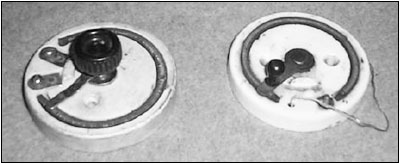
Figure 7. The as-found rheostat is shown on the left. A correct rheostat (right) for a JR-4 was found in the White Elephant Auction at the Yankee Tuneup in East Greenwich, Rhode Island.
I thought, "Wow, so far so good -- an intriguing rheostat and a spherical Audion!" But I wasn't prepared to discover in the last box, just begging to be matched with the ceramic rheostat and spherical Audion previously unearthed, a small wooden cabinet, with a prominent metal plate on the top. The plate declared this to be a "DEFOREST AUDION, U.S. Patent Nos. 836 070, 867-868, 879-532, 836-071, 867-878, 979-275, AND OTHER PATENTS, RADIO TEL. & TEL. N.Y., U.S.A." See Figure 5.
As you can imagine, by this time, my adrenaline was soaring. It appeared as though I had stumbled across the major parts for a De Forest detector! It was time to check Morgan McMahon's book Vintage Radio to confirm my find. Sure enough, there on page 171, was the exact image, with the caption, "DEFOREST AUDION DETECTOR, TYPE RJ-4, 1909, COMPLETE."
The bottom of my RJ-4 was missing, leaving exposed 9 small, dry batteries, as shown in Figure 6. The label reads, "THE RELIABLE Semi-Dry Franco Battery -- a wonderful battery made by a new process, giving remarkable results." The batteries are all Type 944, with what appears to be a coded expiration date: "Guarantee expires T18AQM." My good friend, Wally Worth, a prolific A.R.C. contributor, volunteered to make the missing base for the cabinet.
It didn't take me long to decide that the RJ-4 was a "keeper," so I decided not to put it on the market, at least not for a while.
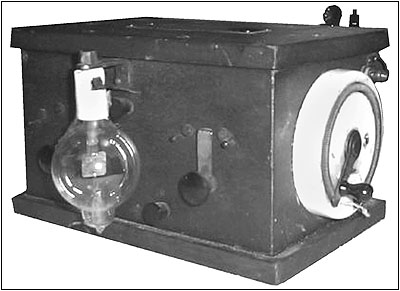
Figure 8. The restored De Forest RJ-4 with the correct rheostat on one end and the spherical Audion mounted in the screw type base tube socket.
However, the Yankee Tuneup, a combined radio meet and white elephant sale in East Greenwich, Rhode Island, was scheduled to meet the next weekend. I figured, why not do a little "show and tell" and take the RJ-4 for my colleagues to drool over. I made up a large sign that said "NOT FOR SALE -- Please Do Not Handle" and displayed the RJ-4 and the spherical Audion on a small table.
The reaction was electrifying and immediate. Antique radio buffs fluttered around the RJ-4 like moths attracted to a lantern's flame: all jostling to get a closer look and to learn more about this rare 1909 radio artifact. Even though the Not For Sale sign was prominent, someone offered me a very substantial sum for the RJ-4, as is, and not even including the spherical Audion! Another person kindly volunteered to send me a copy of the original blue print of the RJ-4, which I gladly accepted.
Still another helpful person excitedly told me that an original rheostat for the RJ-4 was for sale in the White Elephant auction. (As an aside, I have found over the years that most radio collectors and dealers are always ready to share their knowledge with their colleagues.)
Given the tip about the rheostat in the auction, I rushed in to the building where the auction items were on display, and wrote down my bid offer. No other bid was made, so I now have the correct rheostat for the RJ-4. Figure 7 shows the difference, however slight, between the two rheostats. The one found in the shed, shown on the left, is 31/2" in diameter, and a knob is mounted directly on the central shaft. The rheostat on the right, as depicted in Vintage Radio, is 31/4" in diameter, and has a small handle mounted on the end of the wiper arm.
Figure 8 shows the complete assembly with the correct rheostat on one end and the spherical Audion mounted in the screw-type base tube socket.
Still More Good "Stuff"
As if the Mignon, the De Forest RJ-4 with the spherical Audion, and the Westinghouse RC were not enough, how about this partial listing of other "stuff" that I took home from the shed: a Hammarlund Super Pro, Type XD, early serial number, possibly a prototype; a Browning Visual Frequency Monitor; an H.O. Boehme Morse Code Recorder, Type 10-G; a Signal Corps Frequency Meter, BC-221 AK; a National Coil set, rack of three; Abbott Models MRT-3 and TR4 Ultra shortwave transceivers; an Atwater Kent Model 100 drum speaker; a Radiola III-A parts set; a T.R. McElroy MAC audio oscillator; plus various parts and tubes, some still unsorted.
All of the above was the good news. The disappointing side is that according to the seller, what I purchased was only about one-third of the collection it came from! Apparently, after loading his vehicle to the limit, he was forced to leave the rest behind.
On the other hand, if I hadn't made the effort to search out yard sales that day in the first place, I would not have stumbled across at least a portion of what must have been quite a collection. And that is the main point of this article. Start with the confidence that there are still some fine radio artifacts waiting to be discovered at yard sales. But you must follow a simple basic premise: Nothing will happen unless you generate the patience, discipline, and perseverance to help make it happen.
Epilogue
One final note. As I mentioned earlier, I paid a very nominal amount for everything in the shed, partly because I truly had no idea of the extent of the huge load I had carried away. Once I realized what I had, I felt it would only be fair to share my good fortune with the seller, especially since this young family seemed to be just scraping by. With this in mind, I mailed a check to the seller in an amount several times over what I had initially paid. In return, I received the following letter, which I shall always treasure more than any material treasure I might ever find at any yard sale:
Dear Mr. Desjarlais,
Thank you for the gracious check! You are a man of great integrity. You have my deepest respect. As you can imagine, three little boys tend to get expensive, and this money will help to provide us some things we really need. I will certainly keep an eye out for more equipment. I hope to do business with you again. Many thanks.
(Dick Desjarlais, 48 Foster St., Littleton, MA 01460)
Dick Desjarlais is a longtime A.R.C. contributor. His interest in radio began at age 14 when he was an apprentice in a radio repair shop. This interest renewed itself when he retired from school administration, and since 1987, he has been an active collector and dealer.
| [Free Sample] [Books, etc., For Sale] [Subscribe to A.R.C./Renew] [Classified Ads] [Auction Prices] [Event Calendar] [Links] [Home] [Issue Archives] [Book Reviews] [Subscription Information] [A.R.C. FAQ] URL = http://www.antiqueradio.com/Feb01_mignon.html Copyright © 1996-2001 by John V. Terrey - For personal use only. Last revised: February 3, 2001. For Customer Assistance please contact ARC@antiqueradio.com or call (978) 371-0512 Pages designed/maintained by Wayward Fluffy Publications
Antique Radio Classified |